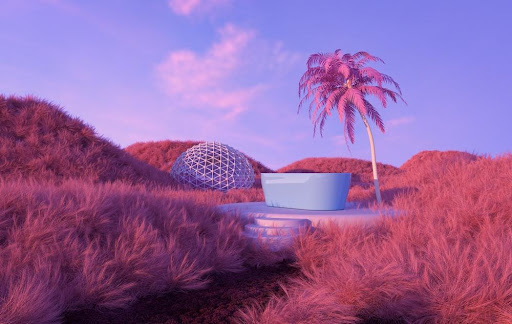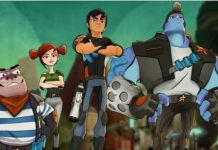3D manufacturing begins with conceptualizing ideas and creating storyboards that turn those ideas into visual form. After defining the technical requirements, the next step is to create a scenario. The script consists of a hand-drawn version of the video as action and dialogue sketches.
Originally, a storyboard was a series of images that represented a story in two dimensions. The first dimension is time, what happens first, what happens next, and what happens last. The second dimension concerns communication, the interaction of narrative and images, the connection of visual transitions and effects, and the interaction of narrative with music. Animated mockups are created to better understand the movement and timing of complex animation sequences and intense scenes in the field of 3d animation video production. This helps animators plan shots and try to incorporate visual effects into the final shot.
3D modeling in the plan of creating a video animation
Once the script is approved, the next key task is to model the building’s props, environment, and characters. Modeling is the process by which an object takes shape and ends up on a 3D mesh. Creating 3D objects means designing simple objects, called primitives, or expanding them into complex, detailed shapes. It can be a single point, a 2D line, a curve, or a 3D object. At the modeling stage, animated elements are modeled in 2D or 3D format. The resolution of the resulting image and the proximity of the camera to the model in the final animation determine the level of detail required for a particular model.
The texture is a technique that is heavily used to add clothing to a 3D model. When you create a 3D model, 2D images are overlaid with color, pattern, and texture. This is called a map and usually defines the overall color of the model. They are created using software like Photoshop and also use real photos for textures. It is easy to record and modify to create beautiful patterns. Added some properties like brightness, transparency, opacity, reflection, texture, and of course color.
Whether you’re creating an image from scratch or modifying an existing image, the experts at Walla Walla Studio carefully adjust shadows and textures to suit the needs of your scene. Textures are drawn from a concept, and layout textures are created as maps and assigned to a specific model.
Before we continue, we need to create a wireframe for your 3D shape. This stage controls the character’s movements to bring it to life. Rigs add action to a character or describe the movement of a mechanical object and are fundamental to the animation process. Depending on the theme, each piece of hardware is unique, as is its corresponding set of controls. Loading combines a 3D model with a dummy skeleton that allows you to manipulate the 3D model with key controls.
Using animation and creating it
Animation is a process of active movement of three-dimensional objects. The animator visualizes the object he needs frame by frame. Other key techniques are used, such as hovering over objects and sorting them along curved paths, or importing motion capture data and applying it. You can also use the 3D programs built into the physics engine, for example when objects need to fit into a scene.
Animation is the most important and time-consuming part of the production process. The process of creating an animation varies depending on the genre, but the key aspects are:
- Timing;
- Smoothness;
- Expression.
Animation software is used to create the movements and facial expressions in each scene. The movement of each scene is created by defining key frames or poses. This is done using computer commands and character research to determine basic poses. The computer then creates an “in-between frame” that the animator changes as needed.
Lighting in the field of creating 3d animated video
Lighting is essential to create 3d animated videos and creating a sense of realism and make the image more attractive. Using the wrong lighting can ruin a scene, change the look of your subject, and undo all your hard work. However, a competent use of light can make a scene authentic. If your goal is realism, you can create scenes that are almost identical to real life. You can use lighting to control the appearance of shadows and reflections and add cameras to capture specific angles. If necessary, you can add visual effects such as glow, fire, fog, and light effects. 3D cameras are the most effective tools, so they are not subject to the physical limitations of the real world. You can create scenes and use them to create an extremely exciting picture on the screen. You don’t need a lens, focus, film, or diaphragm. All these functions are controlled by software. You can create one or more 3D cameras, place them anywhere in 3D space, and apply settings that simulate focal length, depth of field, and other important, key details. You can animate the camera to perform several actions at the same time, for example, you can zoom in on a scene and adjust the depth of field you want at the same time.
Visualization in the field of creating 3d animated video
Rendering is the key process of absolutely transforming all the information (parameters, colors, character movements) from the files that make up the footage into a single frame of the film. This is one of the most important and last stages in the 3D production chain of animated video (but not the last in all 3D production). Rendering does all of the above work by calculating every pixel of every frame based on the model, materials, lighting, and effects. Key rendering algorithms can be used to achieve different results, from photorealistic to cartoonish. Creating a good final version of a scene requires a lot of attention to camera placement, lighting parameters that affect mood and shadows, reflections and transparency, and the use of special effects such as liquids and glass. Rendering involves rendering the individual pixels of each frame based on models, materials, lighting, and various additional effects. To achieve high-quality results, different visualization algorithms are needed, from photorealistic to cartoon. Visualization takes a long time.Metaverse
The unique composition and VFX
Renders are integrated into the compositing program for editing and adding special effects, which include everything from special effects to things exploding, evaporating, or transforming. This includes creating environments as needed (from buildings to entire worlds) and switching between screens. You can replace the background with images created digitally or obtained from a specific source. Compositing also involves creating a computer image from live images.
The use of various music and various sound effects in the field of creating 3d animated video
Music and sound effects add depth to the animation and make the sound more enjoyable. Composers create music and background sound effects to set the tone of the animation. The work consists of creating sound effects using various tools to create original sounds to further create richer compositions for 3d animated video. The comprehensive inspection stage is the last stage where everything is checked by Walla Walla Studio specialists before being sent to the customer. Here, the combined images, music, and sound effects are collected and edited so that everything is in sync. The Walla Walla Studio editor carefully checks that all sound effects have been added. The system adds special effects and saves digital images in a format suitable for animated 3D videos. It is important to define the main message for your 3d animated video and build a coherent script based on it https://wallawallastudio.com/3d-animation-video-production/. No matter what concept you’re working on, Walla Walla Studio develops simple and precise scripts that will make your animated video message stand out. The importance of this stage of animation cannot be overstated. The script serves as the basis for the rest of the video. It is neither one nor the other. The worst-case scenario never produces quality work. Storyboards are one of the most valuable tools in the animation workflow because they not only help clients understand how the video will look but also prevent mistakes.
















